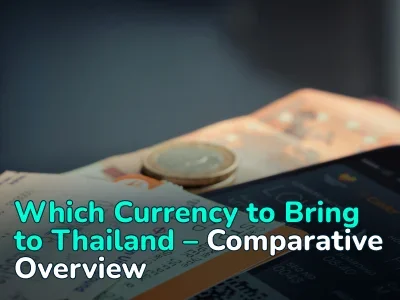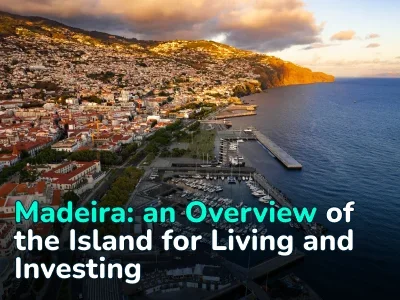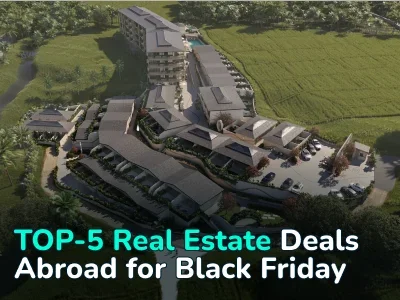
Real Estate Crowdfunding: How to Invest from €50 with Returns of Up to 12%
There are many ways to make money: you can invest in stocks, bonds, real estate, or simply put money in a savings account. However, when it comes to real estate, you usually need to have a significant initial capital for such investments.
But there is also an option for investing relatively modest amounts — crowdfunding. This mechanism allows individuals to finance various projects with only €50-1000. In our article, we will look at what crowdfunding is, how it functions, and how this mechanism is adapted for real estate markets in different countries.
What is Crowdfunding, and How Does It Work?
Crowdfunding involves equity participation in the investment process, with the financial burden being shared between all participants. That is, if the project involves purchasing real estate for $300,000, then three participants will need to invest $100,000 each, and thirty — $10,000 each. But on platforms, the number of participants is unlimited — there is only a clear final amount that needs to be collected, and then both those who have $10,000 and those who only have $100 can become investors. Crowdfunding is divided into four main models, each of which has its own characteristics:
- Charity crowdfunding. Investors invest without expectation of financial return in charitable or social projects.
- Reward crowdfunding. Participants receive non-financial rewards in the form of access to the product. Often used in game development.
- Equity crowdfunding. Investors receive a share in a company or project and earn from its profits. This model is popular in startups and real estate.
- Lending crowdfunding. Investors lend funds, for example, to buy real estate for rent and receive a fixed percentage of the income from it.
Specialized platforms serve as a link between the investor and the project. They also conduct verification of the project initiators, publish information on business plans, risks, and estimated profitability, and provide legal support. In Europe, platforms are subject to ESMA directives, in the US — SEC (JOBS Act 2012), and in Italy — Consob.
Real estate crowdfunding allows individuals to invest in residential, commercial or tourist properties with minimal investment. This mechanism has become a popular way to diversify income from assets. Two main models are in use:
- Equity. Investors buy a share in a property or company that owns the property and receive a share of the profits from rent or sale. An example is Walliance, where investors financed the construction of a residential complex in Milan with a yield of 10%.
- Lending. Investors provide a loan to the developer and receive a fixed interest rate.
However, it is also worth considering the risks. The developer may not fulfill its obligations, and investors will simply lose their invested money. Even in the well-regulated European market in 2020, 10% of projects on such platforms faced delays or withholding of payments. The same applies to the financial difficulties of the developer: funds may be frozen or not returned if it is declared bankrupt.
The second important risk factor is housing prices. It is clear that they always grow, but due to local characteristics, the cost of objects in the residential complex may fall (natural phenomena, regional instability).

Real Estate Crowdfunding in Different Countries
Real estate crowdfunding has gained global popularity, but overall, the basic mechanism is the same for everyone, with minor differences in project types, minimum investment amounts, and return levels.
USA
The United States is the largest and most strictly regulated real estate crowdfunding market. Fundrise and RealtyMogul offer investments starting from $1000 in renovating office buildings in Washington and residential complexes in Miami, with returns of 8–12% per annum. RealtyMogul specializes in commercial real estate, offering equity participation and credit investments.
United Kingdom
In the UK, real estate crowdfunding is regulated by the Financial Conduct Authority (FCA), and transactions are conducted through the CrowdProperty and Property Partner platforms. The average yield is 7-9% with a minimum investment of £500, while Property Partner allows investments from £100, but then the platform charges an additional commission of 2-3%.
Germany
The German crowdfunding market is regulated by the German Federal Financial Supervisory Authority. The average yield is relatively low, 5–8%, and the main platforms Exporo and Seedmatch allow participation in projects with an amount of €500.
Spain
The leader of Southern Europe is Spain. There are fewer regional platforms on its market, but there is a branched Housers, which also operates in Italy and Portugal. It has the lowest initial investment thresholds — from €50, with an average yield of 7-10%. However, according to Law 5/2015, it is necessary to undergo accreditation; otherwise, it will not be possible to invest more than €3000. The main focus of the local market is the renovation of apartments for subsequent rental.
Italy
The Italian real estate crowdfunding market operates on the Walliance and Concrete Investing platforms. The starting amount for investment is usually €500 with a return of 6 to 12% per annum for a period of 12–36 months. However, in 2021, a special initiative from ITS Lending appeared to revitalize small villages (borgo) with a population of less than 5,000 people. They offered to invest from €100 and receive an income of 6–10% in just 3–12 months. At the same time, they promised that it would be possible to invest only in the renovation of projects that had already been purchased by someone, which meant that the return was guaranteed. But since 2023, ITS Lending has not shown any signs of activity.
Is Crowdfunding Worth It?
Real estate crowdfunding is an interesting phenomenon, and its main attraction is its accessibility. But on the other hand, not the highest profitability and the presence of risks make even large investors doubt the advisability of such investments.
Benefits of participating in crowdfunding:
- Low entry threshold. Available with investments from €50—1000.
- Average yield. It is possible to receive income of 6–12% per annum, which is slightly higher than some bank deposits.
- Passive income. After investing, all that remains is to receive interest, without the need to manage the property.
- Diversification. Investing in projects through crowdfunding is a good option for diversifying available assets.
Risks and limitations in crowdfunding:
- Default risk. The developer or project initiator may default, resulting in a loss of funds.
- Low liquidity. Funds are often frozen for the duration of the project, and it is difficult to withdraw investments before their completion.
- Vulnerability to market fluctuations. Falling property prices or rising interest rates reduce profitability. In 2022–2023, due to the increase in rates by the European Central Bank, project profitability fell by 2–3% (to 3–4%).
- Platform risks. Young or niche platforms may well close, like ITS Lending in Italy.
Ultimately, the choice is yours, and if you do decide to invest in crowdfunding, you should start by choosing a platform. It’s important to look not only at the investment threshold and potential return but also at the platform’s reputation, the presence of regulation, and investor feedback.
When choosing a project, pay attention to:
- Profitability. Inflated profit promises are a reason to check the project more carefully. Standard profitability rarely exceeds 6-12%.
- Risks. Assess the developer’s reputation and its guarantees of your profit.
- Clarity of the plan. The project should have a clear business plan, with sound risk assessments, financial forecasts, and data on previous projects.
It is better to invest small amounts in several projects and then track the progress of the projects through your personal account on the platform. This is where reports on construction, rent, or sales should be published.
What’s the Bottom Line?
Crowdfunding is an ambiguous financial instrument. On the one hand, there are many voices calling for investing in a project and receiving consistently high profits. However, the loudest calls are either from the platforms themselves or the initiators of projects on them. In fact, income averages 8% per annum, but the percentage may fall if the project owner has difficulties. In the event of bankruptcy, the invested funds are completely lost.
On the other hand, statistics show that, in general, crowdfunding stands out for the investor only in that the minimum threshold for such investments is lower. Otherwise, it is no different from the standard process of investing in real estate. But in any case, the final decision is always up to the investor.
Author
I write informative articles about real estate, investments, job opportunities, taxes, etc.























